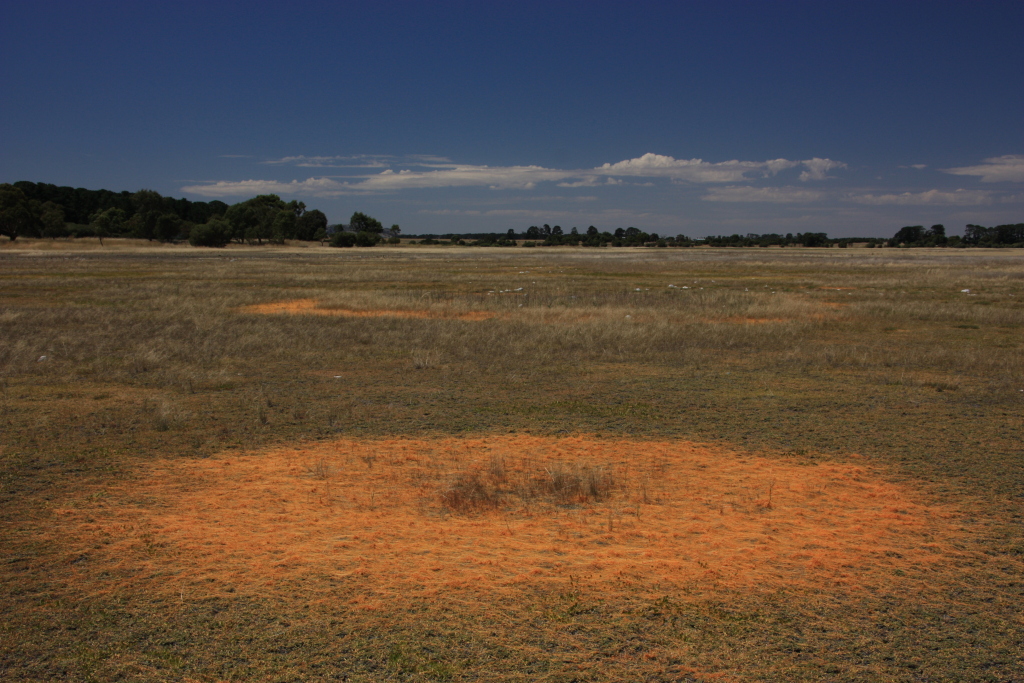Cuscuta tasmanica
Engelm. Golden DodderStems pale yellow. Inflorescence a loose few-flowered axillary cluster, subtended by an obtuse bract 1–1.5 mm long. Flowers 5-merous; pedicels mostly 3–6 mm long; calyx 1.5–2.2 mm long, lobes unequal, oblong to ovate-oblong, obtuse, much longer than the tube; corolla 3–4 mm long, creamy, lobes ovate-oblong, obtuse, equal to or longer than tube; filaments 0.3–0.7 mm long, c. as long as anthers; scales subtending stamens oblong, equal to or longer than corolla-tube, with a dense fringe to 0.5 mm long; stigmas capitate. Capsule depressed-globose, c. 3.5 mm diam., not circumscissile; seeds 1.6–2 mm long. Flowers mainly summer and autumn.
MuM, Wim, Brid, VVP, MSB, RobP, GipP, OtP, WaP, Gold, CVU, NIS, EGL, WPro, HNF. Also WA, SA, NSW, Tas. Widespread through much of Victoria, mostly in saline areas where usually parasitic on species of Wilsonia and Chenopodiaceae.
Jeanes, J.A. (1999). Cuscutaceae. In: Walsh, N.G.; Entwisle, T.J., Flora of Victoria Vol. 4, Cornaceae to Asteraceae, pp. 375–379. Inkata Press, Melbourne.
 Spinning
Spinning

